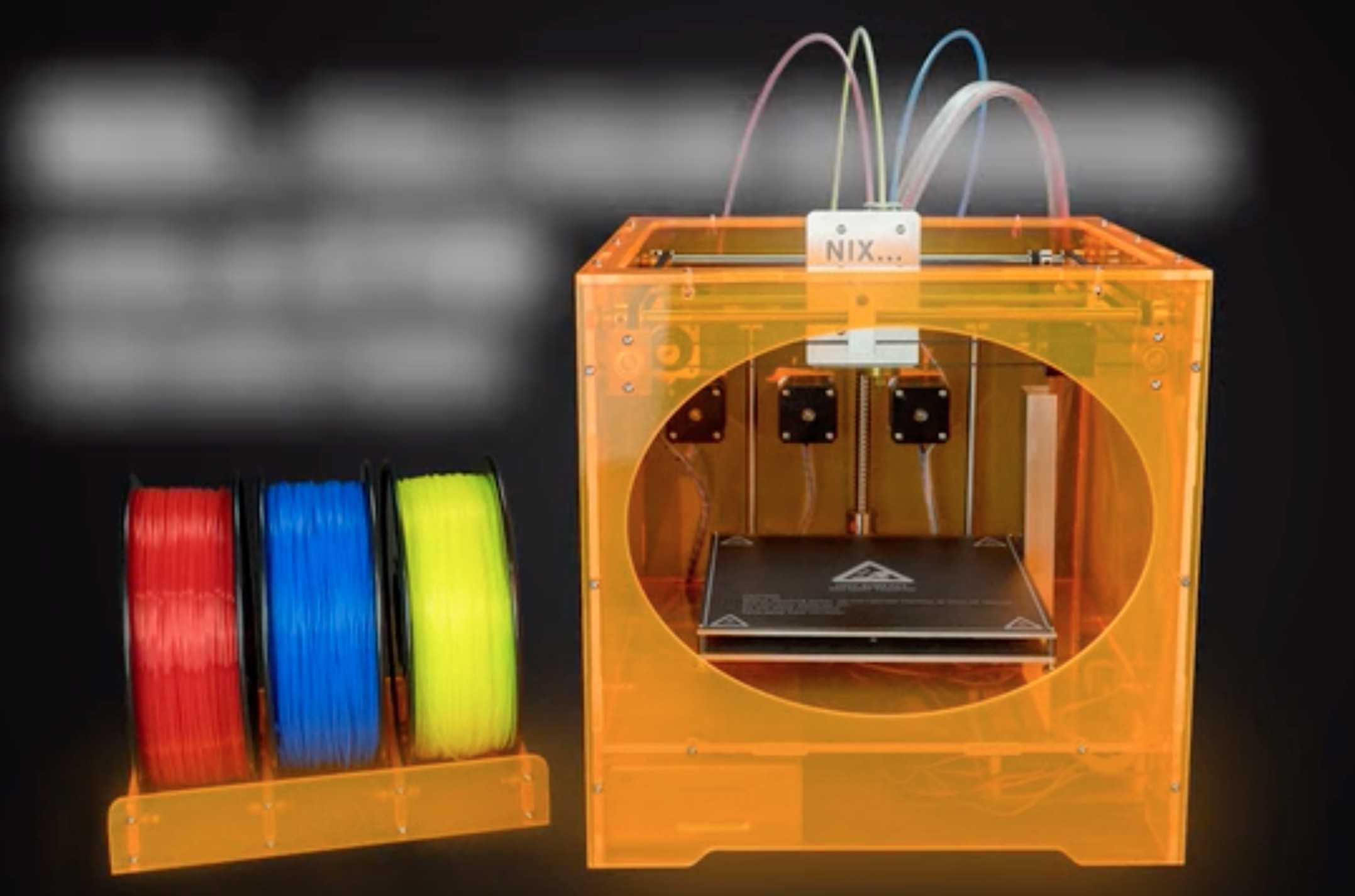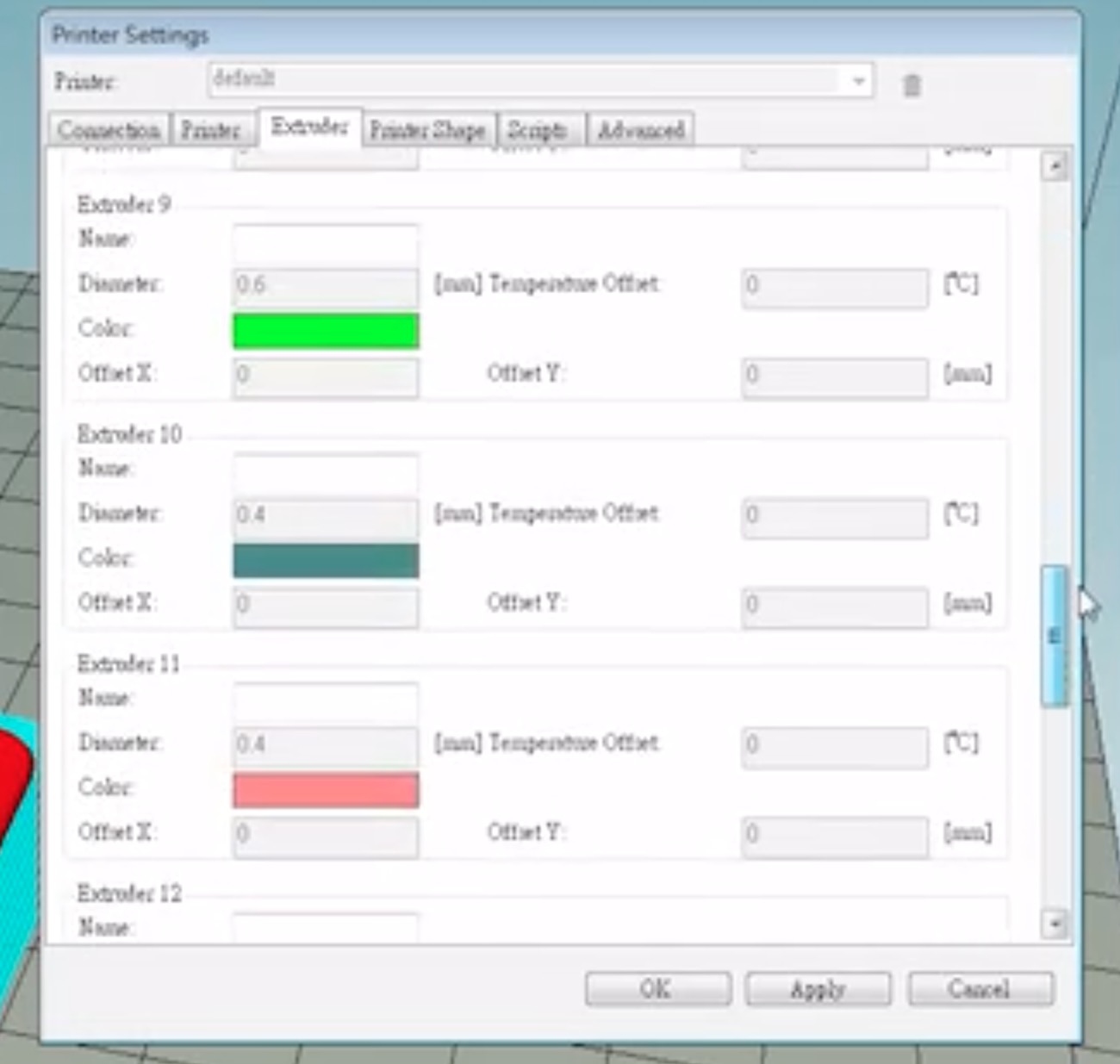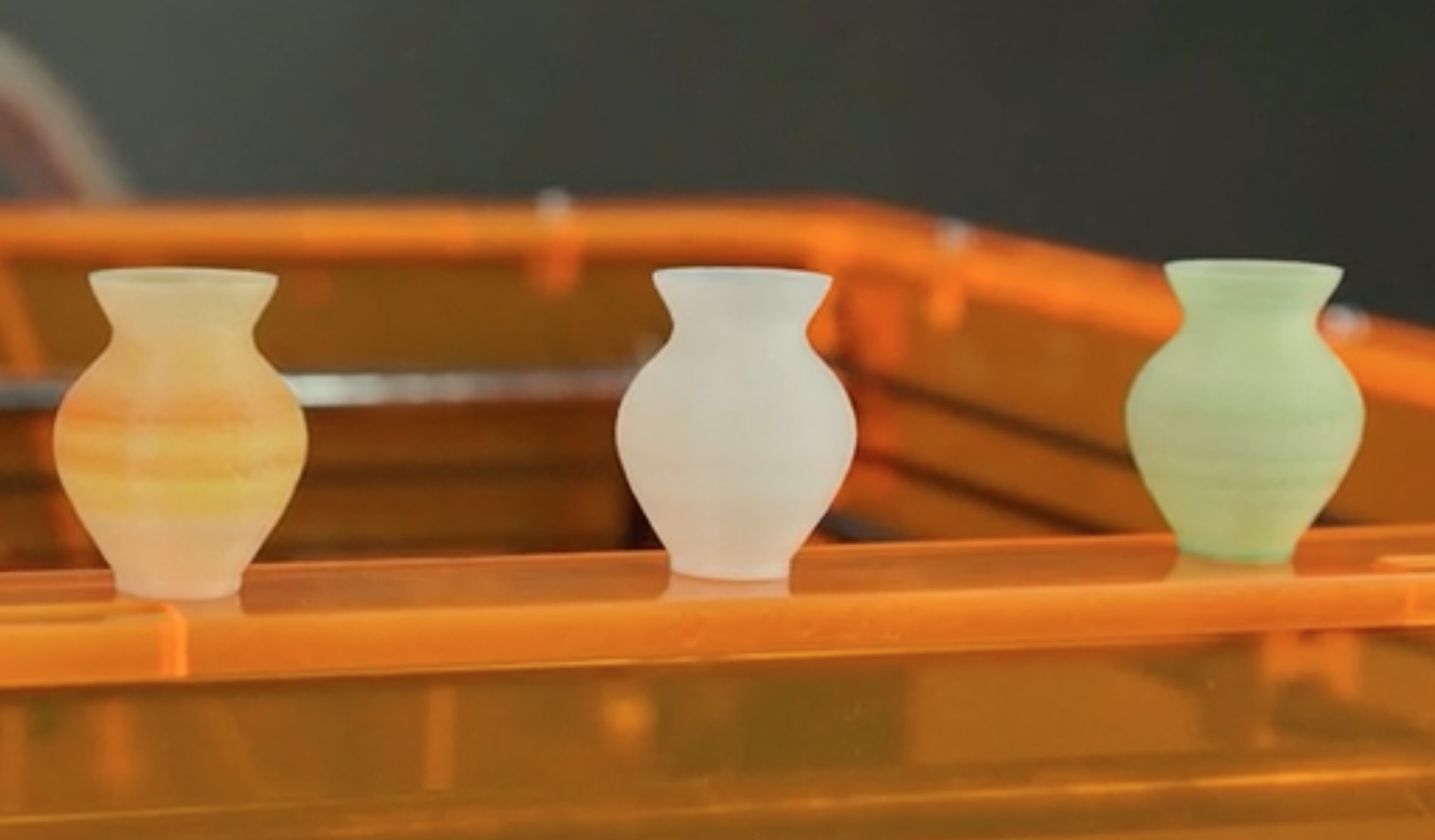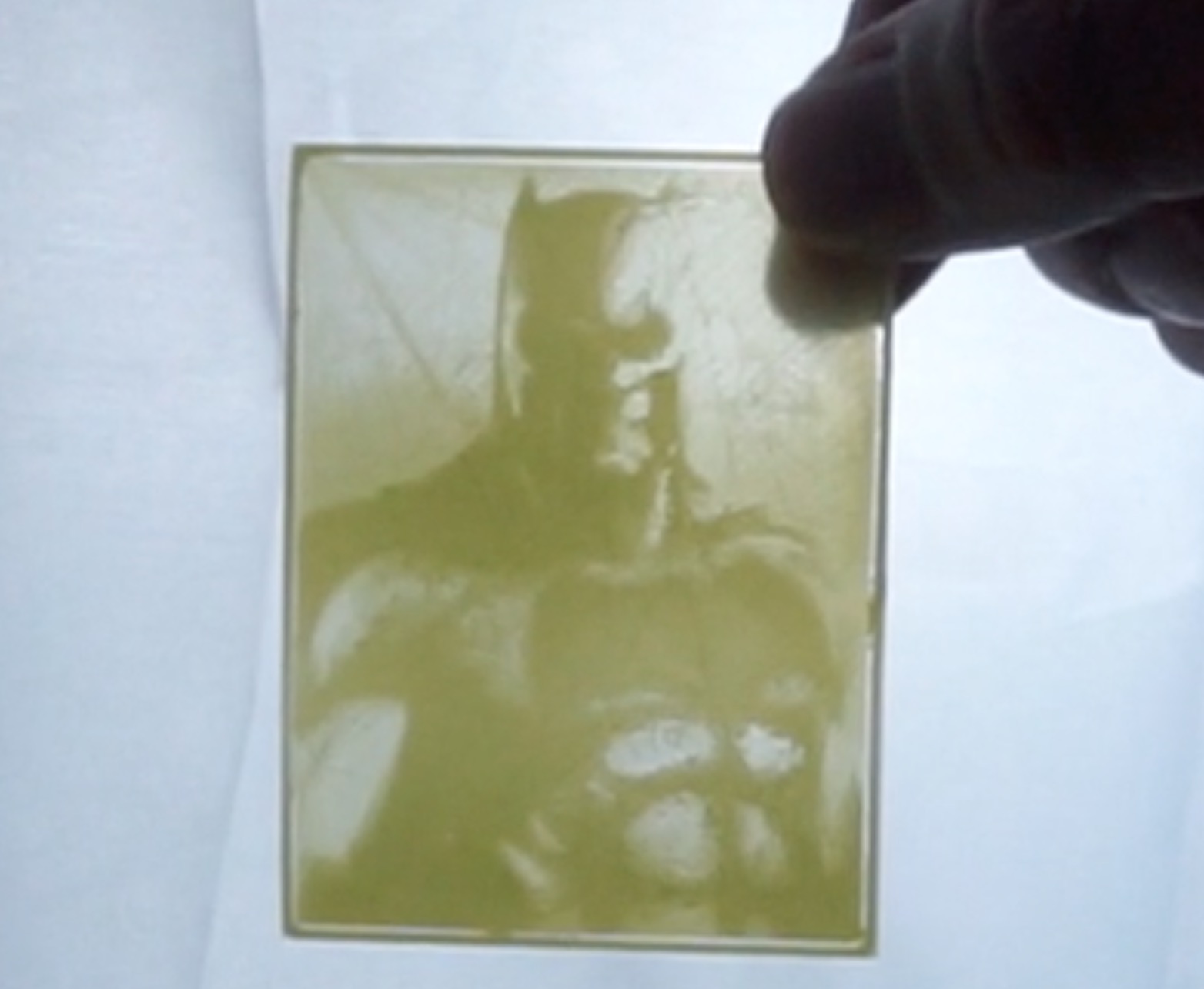
I’m looking at a recent Kickstarter launch for a machine billed as “The World First High Resolution Full Color 3D Printer”.
The strangely punctuated “Nix…” desktop 3D printer makes several boasts that I may be hard to believe.
The machine is a triple extrusion system, capable of 3D printing up to three differently colored PLA filaments at the same time through a single nozzle. The hot end includes a custom mixing chamber that can theoretically permit controlled mixing of the three input plastics to form other unique colors. This is accomplished by changing the ratios of power applied to each of the three extruder motors.
This style of color mixing with 3D printing has been attempted previously, but generally it hasn’t worked very well because the mixing process typically takes a relatively long time and must be purged of the previous mix before engaging printing. The purge requires the hot end to move off the build plate and dump intermediate mixes until it’s “clean”. This process adds considerable time to any print job.

Other attempts at such mixing don’t bother with the purge process and simply end up with weirdly colored gradients on the layers of their prints.
But the Nix… supposedly has a specially designed nozzle that will account for this process and enable effective full color printing.

However, the company has provided no visual evidence of such a capability. In fact, their video shows only gradient color changes, suggesting that purges are required to make proper color changes.
There’s another suspicious claim by this project: they say they can 3D print layers as small as 5 microns, or 0.005mm.
The best I’ve seen on any other filament-based 3D printer is about 20 microns, on a Mass Portal machine that’s made with only high-precision custom CNC metal parts. It is highly unlikely the Nix… can actually produce 5 micron layers in real life situations. Curiously, the company’s website says they can 3D print 10 micron layers, while the Kickstarter says 5 microns.
This is especially true when you find out the machine comes with a 0.5mm nozzle, which is actually LARGER than the standard 0.4mm default nozzles found on most desktop 3D printers. Yes, you can get an optional 0.4mm nozzle or a 0.7mm nozzle for coarser, higher speed printing.

[UPDATE] Felix from Nix… reacted to our suspicions and posted an update video on their Kickstarter page with a demonstration of 5 micron 3D printing, in which a lithopane was printed with 58 x 5 micron layers, plus a 150 micron base (which I suspect is required to start such prints as you’d have a really hard time leveling a bed to 5 micron accuracy). The 2+ hour print was measured to be 0.43mm, the correct thickness. However, that’s a very specific type of print and I am still a bit suspicious whether the machine can print in a wide variety of real-world practical 3D printing situations at that resolution. Please review their new video and see what you think.
The color functionally is also suspicious: the Nix… uses three input filaments to mix three filaments at once, but anyone using a paper color system knows that you must have at least a four color system to produce decent colors. CMYK, or Cyan, Magenta, Yellow and Black. On paper implementations, “White” is provided by the paper, so in 3D print implementations, you need another color, “W”, to print white and perhaps even a “T” if you’re interested in transparent.
Why did paper vendors add “K”? Because the “black” quality of mixing C, M and Y always comes out brown. Rather than having “muddy” prints, they added “K” to just print real black. The Nix… needs to do the same thing.
The price of the machine at launch is £749 (USD$912), which is a bit higher than the price of some other non-color machines.
I suspect this machine could be useful if you’re seeking a way to 3D print simple gradients, but do not expect it to be printing full color textures on your prints as we’ve seen in some other implementations recently.
Via Kickstarter and Tomato-3D

